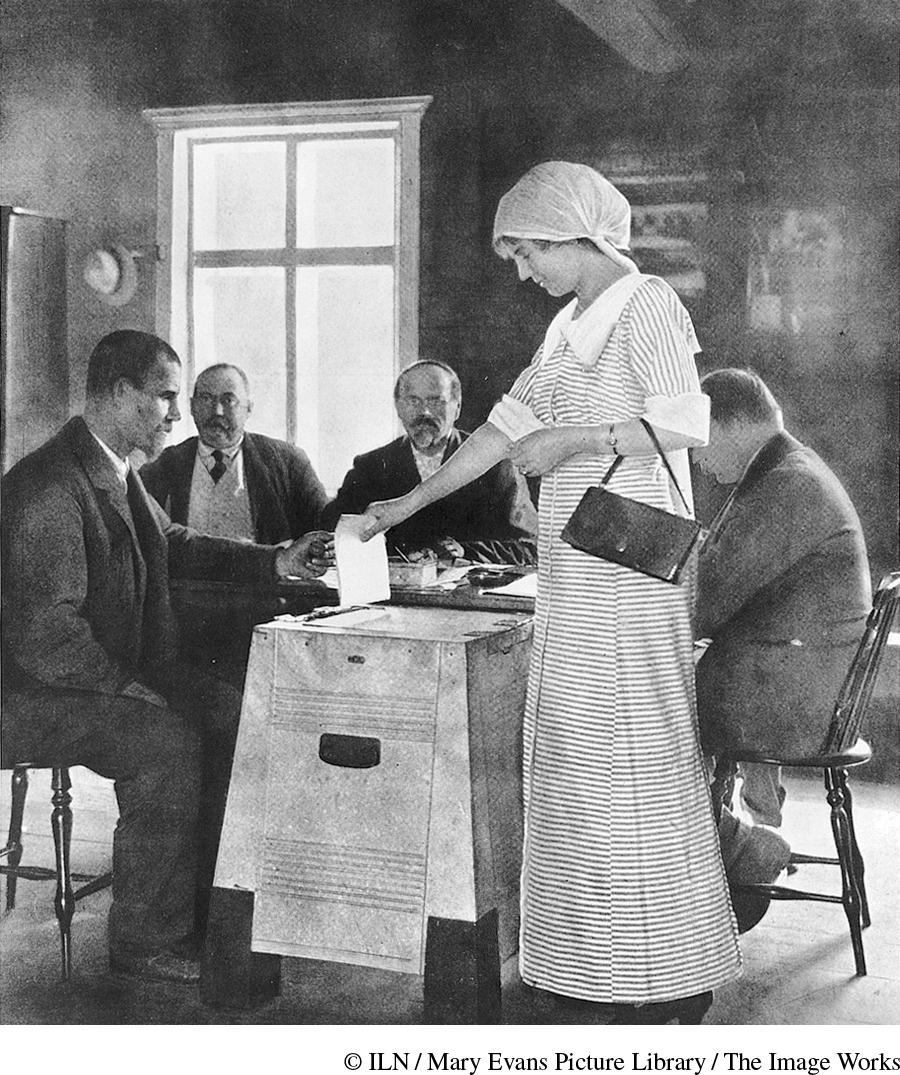Rights for Women and the Battle for Suffrage
Rights for Women and the Battle for Suffrage
Women continued to agitate for the benefits of liberalism such as the right to vote and to own their wages if married. German women focused on widening opportunities for female education. Their activism aimed to achieve the German cultural ideal of Bildung—the belief that education can build character and that individual development has public importance. In several countries, women worked to prevent prostitutes from being imprisoned on suspicion of having syphilis when men with syphilis faced no such penalty. Other women took up pacifism—among them Bertha von Suttner, whose popular writing emphasized how war inflicted terror on women and families. (Von Suttner influenced Alfred Nobel to institute a peace prize and then won the prize herself in 1903.)
By the 1890s, many women activists decided to focus their efforts on a single issue—suffrage—as the most effective way to correct the many problems caused by male privilege. Thereafter, suffragists created major organizations involving millions of activists. British suffrage leader Millicent Garrett Fawcett (1847–1929) pressured members of Parliament for women’s right to vote. Across the Atlantic, American Susan B. Anthony (1820–1906) traveled the country to speak at mass suffrage rallies, edited a suffragist newspaper, and founded the International Woman Suffrage Alliance in 1904. Its leadership argued that despite men’s promises to protect women in exchange for their inequality, the system of male chivalry had led to exploitation and abuse. “So long as the subjection of women endures, and is confirmed by law and custom, . . . women will be victimized,” a leading British suffragist claimed. Other activists believed that the characteristics associated with mothering were necessary in shaping a country’s policies.

Women’s rights activists were predominantly, though not exclusively, from the middle class. Free from the need to earn a living, they simply had more time to organize and to read the works of feminists such as Harriet Taylor and John Stuart Mill. Working-class women also participated in the suffrage movement. Textile workers of Manchester, England, for example, put together a vigorous movement for the vote, seeing it as essential to improved working conditions. Many of these women, however, distrusted the middle class and believed suffrage to be less crucial than women’s pressing economic concerns.
In 1906 in Finland, suffragists achieved their first major victory when the Finnish parliament granted women the vote. The failure of parliaments elsewhere in Europe to enact similar legislation provoked British suffragist Emmeline Pankhurst (1858–1928) and her daughters to found the Women’s Social and Political Union (WSPU) in 1903. Starting in 1907, members of the WSPU held parades in English cities, and in 1909 they began a campaign of violence, blowing up railroad stations, slashing works of art, and chaining themselves to the gates of Parliament. Disguising themselves as ordinary shoppers, they carried little hammers to smash the plate-glass windows of department stores and shops. Parades and demonstrations made suffrage a public spectacle; some outraged men responded by attacking the marchers. Arrested for disturbing the peace, the marchers went on hunger strikes in prison. Like striking workers, these women were willing to use confrontational tactics to obtain rights.